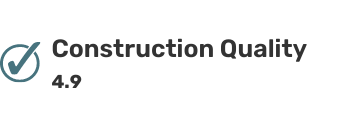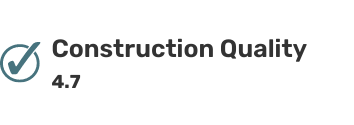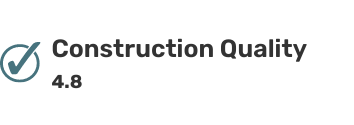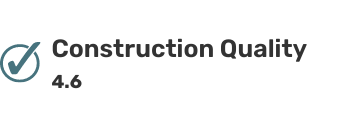Have you ever been lost while scuba diving? It’s easily done if you’re following a guide and taking in all of the underwater scenery. But if you get separated from your dive leader, or if you and a buddy want to plan your own dives, a compass is a necessity. While many computers feature a digital compass, an analog one is much easier to read and use. It is worth adding one to your kit. We review the ten best analog dive compasses for 2023 including specifications, mounting options and features to help you decide which is the best dive compass for you. Our Buyers Guide and FAQs will also help you understand the terminology and features of dive compasses.
BEST DIVE COMPASSES IN 2023
- TRIDENT Large Glow in the Dark Compass with Retractor Cable
- SUUNTO Clipper L/B NH compass
- SCUBA CHOICE Scuba Diving Compass Module
- SCUBA MAX Full Size Wrist Compass
- XS SCUBA Compass Module
- DGX Tech Compass (Northern Hemisphere)
- OCEANIC SWIV Compass Module
- OCEANIC Side Scan Compass Module w/Clip Mount
- SHERWOOD Genesis Compass and Accessories
- SUUNTO Cobra Dive Computer Console (Cobra Compass Only)
ALL THE DIVE COMPASSES THAT WE TESTED
TRIDENT Large Glow in the Dark Compass with Retractor Cable
General Impression
The Trident large glow in the dark compass with retractor cable is our top pick for the best underwater compass. The retractor clip makes it easy to use and attach to different parts of your scuba gear. The retractor clip also swivels, making it easy to use when you are navigating underwater. The compass card display glows in the dark, so you can see easily when diving at night, and the bezel is adjustable for setting different headings during dive planning.
Specifications
BRAND: TRIDENT
DESIGN: Retractor clip, plastic face
INDICATOR MARK INCREMENT: 10 Degrees
DIMENSIONS: 2.5″ diameter
CALIBRATION: Northern Hemisphere
MOUNTING: Clip
VISIBILITY: Side window for accurate viewing
FEATURES: Adjustable bezel, glow in the dark, and a cable retractor reel, red lubber lines
PROS
- Retractor clip
- Swivel on clip
- Display glows in the dark
- Adjustable bezel
CONS
- Retractor cord breaks easily
- Side viewing window hard to read
SUUNTO Clipper L/B NH compass
General Impression
Our pick for the best value for a scuba diving compass is the SUUNTO Clipper L/B NH Compass. This inexpensive, best dive compass is super compact making it an excellent choice for use on different surfaces like your watch, BCD strap, an underwater map, and more. The cardinal directions are in luminous print – making it easy to read in different lighting situations. This dive compass is extra lightweight, easy to read, and can be used out of the water when navigating during land adventures.
Specifications
BRAND: SUUNTO
DESIGN: Plastic, stainless steel
INDICATOR MARK INCREMENT: 10 Degrees
DIMENSIONS: 1.43 x 1.94 x 2.18 inches
CALIBRATION: Northern Hemisphere
MOUNTING: Clip
VISIBILITY: Liquid-filled easy to read face
FEATURES: Supercompact, and clips to watch, sleeve, BCD Strap.
PROS
- Super compact
- Clips to multiple surfaces
- Cardinal directions in luminous print
- Lightweight
- Easy to read
CONS
- Fragile after multiple uses
- Falls out of base easily
SCUBA CHOICE Scuba Diving Compass Module
General Impression
The Scuba Choice Scuba Diving Compass Module has an impressively durable case. Not only does it fit in multiple boots (meaning you can use this compass on your regulator gauge, a clip-on boot, or in a watch band), the 25-degree working tilt does not get easily stuck when you are moving making it easy to use and read. The compass card also glows in the dark, as such you can use it on a night dive making it an excellent choice for beginner divers.
Specifications
BRAND: SCUBA CHOICE
DESIGN: Plastic face module insert
INDICATOR MARK INCREMENT: 10 Degrees
DIMENSIONS: 2-1/3″
CALIBRATION: Northern Hemisphere
MOUNTING: Wrist strap mount or gauge console
VISIBILITY: 25 degree tilt for easy viewing
FEATURES: Rotating ratchet bexel, glows in the dark, red lubber lines
PROS
- Durable case
- Fits in multiple boots
- 25-degree working tilt
- Glows in the dark
CONS
- Card sticks easily
- Bezel pops off easily
SCUBA MAX Full Size Wrist Compass
General Impression
The Scuba Max Full Size Wrist Compass has a durable casing and a broad face, making it very easy to read. The adjustable bezel and double red lubber lines are easy to set and use (this is excellent for beginners). This compass’s wristwatch style comes with a long durable band that fits perfectly over thick wetsuits or even a drysuit. All specs considered this comes as a highly rated, best dive compass for beginners that is used for training by many diving instructors.
Specifications
BRAND: SCUBA MAX
DESIGN: Plastic face, rubber adjustable strap
INDICATOR MARK INCREMENT: 10 Degrees
DIMENSIONS: 3.82 x 3.23 x 3.07 inches
CALIBRATION: Northern Hemisphere
MOUNTING: Wrist
VISIBILITY: Large face, top & side easy to read
FEATURES: Rotating ratchet bexel, glows in the dark, red lubber lines
PROS
- The large face is easy to read
- Durable casing
- Adjustable strap for wetsuit/drysuit
- Adjustable bezel
- Double red lubber lines
CONS
- Long, bulky strap
- Card moves slowly
XS SCUBA Compass Module
General Impression
The XS Scuba Compass Module has a large viewing surface and is easy for beginners to use. The compass card is luminescent which works well for night diving or low light dives. The distinct North-pointing arrow really stands out – making it excellent for people who have trouble reading smaller compasses. The XS Scuba Compass Module also fits in multiple boots like a regulator gauge, wristwatch style boot, or retractor cable clip.
Specifications
BRAND: XS SCUBA
DESIGN: Plastic face module insert
INDICATOR MARK INCREMENT: 10 Degrees
DIMENSIONS: 2.5″ diameter
CALIBRATION: Northern Hemisphere
MOUNTING: Wrist strap mount or gauge console
VISIBILITY: 25 degree tilt for easy viewing
FEATURES: Rotating ratchet bezel, red lubber line
PROS
- Large viewing surface
- Fits in multiple boots
- Distinct North-pointing arrow
- Easy to use for beginners
- Luminescent
CONS
- Sideview window hard to read
- Bezel sticks
DGX Tech Compass (Northern Hemisphere)
General Impression
The DGX Tech Compass has two viewing windows and a sizeable luminescent face, making it easy to read in any environment. The casing is durable and comes with multiple holes to attach the shock-resistant, low-profile bungee mount straps. These mount straps allow you to easily wear it over any thick wetsuit or drysuits.
Specifications
BRAND: DGX Tech
DESIGN: Plastic face, bungess strap
INDICATOR MARK INCREMENT: 10 Degrees
DIMENSIONS: 2.5″ diameter
CALIBRATION: Northern Hemisphere
MOUNTING: Bungee wrist strap
VISIBILITY: Luminescent face,top & side easy to read
FEATURES: Low profile bungee wrist housing, ratchet bezel
PROS
- Low-profile bungee mount
- Luminescent face
- Fits over wetsuits and drysuits
- Two viewing options
- Shock-resistant
CONS
- Bezels turns too easily
- The card sticks easily when tilted
OCEANIC SWIV Compass Module
General Impression
The Oceanic SWIV Compass Module uses quick, smooth movements when navigating underwater. The high visibility lubber line makes it easy to set your course along with the large ratcheting bezel. The ultra-luminescent card provides a brighter view than most underwater compasses. This snags the name of best dive compass as it also fits into different boots, making it very versatile.
Specifications
BRAND: OCEANIC
DESIGN: Plastic face module insert
INDICATOR MARK INCREMENT: 10 Degrees
DIMENSIONS: 2.5″ diameter
CALIBRATION: Northern Hemisphere
MOUNTING: Wrist strap mount or gauge console
VISIBILITY: Easy-to-read bearing indicators
FEATURES: Bright luminescent floating card, red lubber line
PROS
- Quick, smooth movement
- High visibility lubber line
- Ultra-luminescent card
- Large ratcheting bezel
- Fits multiple boots
CONS
- Easily falls out of boots
- Sideview window hard to read
OCEANIC Side Scan Compass Module w/Clip Mount
General Impression
The Oceanic Side Scan Compass Module w/Clip Mount has dual viewing features enabling it to be looked at from either the compass’s top or side. The ultra-luminescent card provides a brighter view than most underwater compasses and the high visibility lubber line is easy to read, which is great for beginners. The built-in clip ring is perfect for attaching the dive compass to your BCD to stay more streamline underwater.
Specifications
BRAND: OCEANIC
DESIGN: Plastic face with clip
INDICATOR MARK INCREMENT: 10 Degrees
DIMENSIONS: 2.5″ diameter
CALIBRATION: Northern Hemisphere
MOUNTING: Clip
VISIBILITY: Easy-to-read bearing indicators
FEATURES: Bright luminescent floating card, red lubber line
PROS
- Top or side reading
- Ultra-luminescent card
- High visibility lubber line
- Built-in clip ring for attachment
CONS
- Bezels turns too easily
- The card sticks easily when tilted
SHERWOOD Genesis Compass and Accessories
General Impression
The Sherwood Genesis Compass and Accessories come with an automatic spring-loaded retractor making it very easy to use for underwater navigation. This compass has full tilt technology, meaning the card does not stick while moving. There are two options for this compass, either a mounting clip or a key ring that attaches to the spring-loaded retractor for added durability. The double lubber line provides a great contrast making it easy to read underwater.
Specifications
BRAND: SHERWOOD
DESIGN: Retractor clip, plastic face
INDICATOR MARK INCREMENT: 10 Degrees
DIMENSIONS: 2.5 x 3 x 5 inches
CALIBRATION: Northern Hemisphere
MOUNTING: Clip or key ring
VISIBILITY: Gunsight accurate navigation, top and side reading
FEATURES: Adjustable bezel, glow in the dark, and a cable retractor reel, red lubber line
PROS
- Automatic spring-loaded retractor
- Full tilt compass
- Adjustable ratcheting bezel
- Heavy-duty dual mounting clip or key ring
- Double lubber line
CONS
- Retractor gets stuck on other gear
- Side view hard to read
SUUNTO Cobra Dive Computer Console (Cobra Compass Only)
General Impression
The SUUNTO Cobra Dive Computer Console (Cobra Compass Only) is just for SUUNTO brands. However, it is a great compass to attach to your gauges. The gray and black color combo is not only stylish but makes it easy to read as well. The ratcheting bezel is durable and easy to set, and the luminescent face is excellent for underwater navigation at night.
Specifications
BRAND: SUUNTO
DESIGN: Plastic face module insert for regulator
INDICATOR MARK INCREMENT: 10 Degrees
DIMENSIONS: 2.5″ diameter
CALIBRATION: Northern Hemisphere
MOUNTING: SUUNTO gauge console
VISIBILITY: Luminescent face,top & side easy to read
FEATURES: Built in clip ring, red lubber line, connection for gauges
PROS
- Built-in ring for attachment
- Easy to read
- Gray and black color combo
- Ratcheting bezel
- Luminescent face
CONS
- Console-specific
- Bezel hard to adjust
BEST DIVE COMPASS
Buyer's Guide
There are quite a few things to consider when looking to purchase the best underwater compass. There are loads of options on the market, including analog and digital compasses. We focus on analog compasses for this product review, but digital compasses are great too (once you have the basics of navigating while diving down to a science).
Things to consider when buying a compass for scuba diving are price, readability, mounting methods, tilt compensation, and other compass features. A dive compass review usually covers the design and functionality of the compass, regardless of the brand.
A digital dive compass often comes included in a wristwatch style or gauge dive computer that is connected to your regulator set. Analog computers come in different types as well. You may have to try a few compasses and have some practice before you find the best scuba compass and are entirely comfortable with your choice.
Best Mounting Methods
Wrist-mounted compasses are roughly the size of a large watch and can be worn on the same or opposite wrist to that of your dive computer. Some consider them to be easier to manipulate than other mounting methods as they usually come with a strap or bungee cord. If you’re considering this option, also consider the thickness of your wetsuit to make sure the strap is long enough for you.
Retractable clips allow divers to attach their compasses to their BCD or other equipment. It’s a convenient way to keep your compass on hand while still allowing you to quickly deploy the compass when needed. They also tend to be less bulky than their wrist-mounted counterparts.
Hose clips allow divers to attach their compasses to their hoses, convenient for some, but not for others. Consider where your hose is, how long it is, and if you’ll personally still be able to read the compass. Remember, all vision is different!
Features Explained
The best underwater compass will have a few stand out features.
Dive compasses with Northern Hemisphere calibration are suitable for use in the northern hemisphere. They are weighted to prevent the needle from dipping down towards the north and dragging or getting stuck allowing for more accuracy while navigating.
The fluid within a fluid dive compass acts as a buffer absorbing any shocks and vibrations, avoiding any damage to the liquid compass elements. It also helps to stabilize the compass needle which makes the device much more comfortable to read. ‘Moscompass liquid’ is most often used in modern compasses, although several oils and alcohol-based liquids can be used instead.
Sideview navigation is featured in most analog dive compasses, making it easier to use while setting the lubber line. Once selected, you can follow the compass by looking straight down the display.
Compass Readability
It’s essential to ensure the compass markings are sufficient for your exact requirements and that you personally can read them. Good questions to ask yourself are when and where you are likely to be diving. For instance, if you need a compass suitable for night diving, you’ll want it to have good luminescent features, this means phosphorescent material on the critical points of the compass, including the north point of the needle.
Tilt Compensation Explained
Tilt tolerance tells you how far off a zero-degree plane you can tilt the compass before the needle gets stuck. Bigger tolerances are better, and the best dive compass will have a tilt potential of +/-30 degrees. Keep in mind this is two or three times greater than in conventional diving compasses. Scuba diving compasses with a high tilt tolerance allow the compass card to spin freely when the compass isn’t completely flat; this means you can navigate well in all diving conditions. Low tilt tolerance means you’ll be working hard at keeping the compass flat while trying to navigate. To help alleviate the compass sticking, it is essential to keep your compass level so the card is able to move around freely while you are navigating underwater.
BEST DIVE COMPASS
FAQs
1. Should I use a digital or analog compass? Which is better?
It’s always a good idea to have an analog compass, even if you prefer tech. Digital compasses, like all tech, can fail, and an analog compass is a useful safety net to have. The one time you might particularly opt for a digital compass is for night diving where the light-up features are undoubtedly more helpful. Digital compasses are sometimes included in a dive watch design or within a dive computer that connects to your gauges. These will take some practice to get used to how they work. The programming may be different depending on the brand you choose. An analog-style is the best beginner dive compass because it helps you understand how to navigate without having to remember how to use technology on top of setting your course. The best place to keep a wrist-based compass is on your free wrist.
2. Do I need a dive compass? What are the benefits of having a scuba diving compass?
The short answer is yes. Dive compasses are important enough to feature in Open Water Dive Courses, and their use is expanded upon in the PADI Advanced Diver Course and other specialty certification courses. Dive compasses enable divers to locate their current location and follow an established route and/or return to their starting point while scuba diving. Experienced divers may be able to do this by tracking their environment, but a compass is certainly a necessity for safe exploration. Conditions can easily change (e.g. strong currents) or in the event of a diver emergency, you may be needed to assist in locating a lost diver or navigating to a different location. Getting experience using a compass will also make you a more confident diver, especially in areas you may not be familiar with.
3. How do dive compasses work?
Dive compasses determine direction using a free rotating magnetized needle, which always points to magnetic north. They are also waterproof, enabling divers to orient themselves above water, on the surface, and below the water. There are a few essential parts to an analog dive compass that are important to know, and during an open water course, students will need to identify these when presenting navigation skills. The parts of a traditional analog compass are the lubber line, the compass card, the rotating bezel, the index marks, and the viewing window. All these features work together to help divers find their way underwater. The compass card has degree headings from zero to three-hundred and sixty degrees which are used to set points to navigate to and from.
4. What is tilt tolerance on a diving compass?
Tilt tolerance on a dive compass tells a diver how far off a zero-degree plane you can tilt the compass before the needle gets stuck. Bigger tolerances are better, and the best dive compass has a tilt potential of +/-30 degrees. Bear in mind this is two or three times greater than in conventional diving compasses. Tilt tolerance is important to consider before purchasing a dive computer. Many entry-level compasses can be hard to use if you do not fully understand how tilt tolerance works. Do you remember using a compass for the first time and watching the compass stick or move around rapidly with just a small amount of movement? The tilt tolerance is solely related to this. To help alleviate the compass sticking, it is vital to keep your compass level so the card can move around freely.
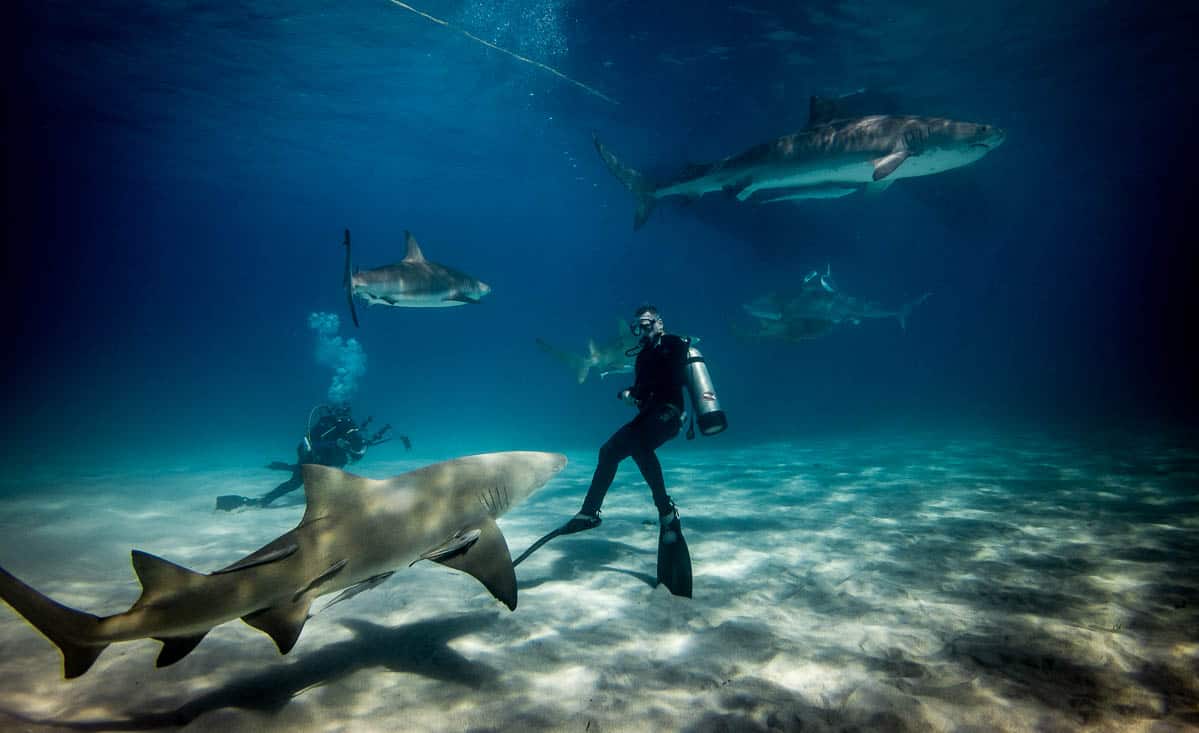

REACH OUT
As always, we create our content with you, fellow adventurers, in mind. So, how’d we do? Did you find this informative? Did it help you make a decision? Did we miss anything? We’d love to hear from you below. Thanks for reading and we hope your next adventure is a great one!







